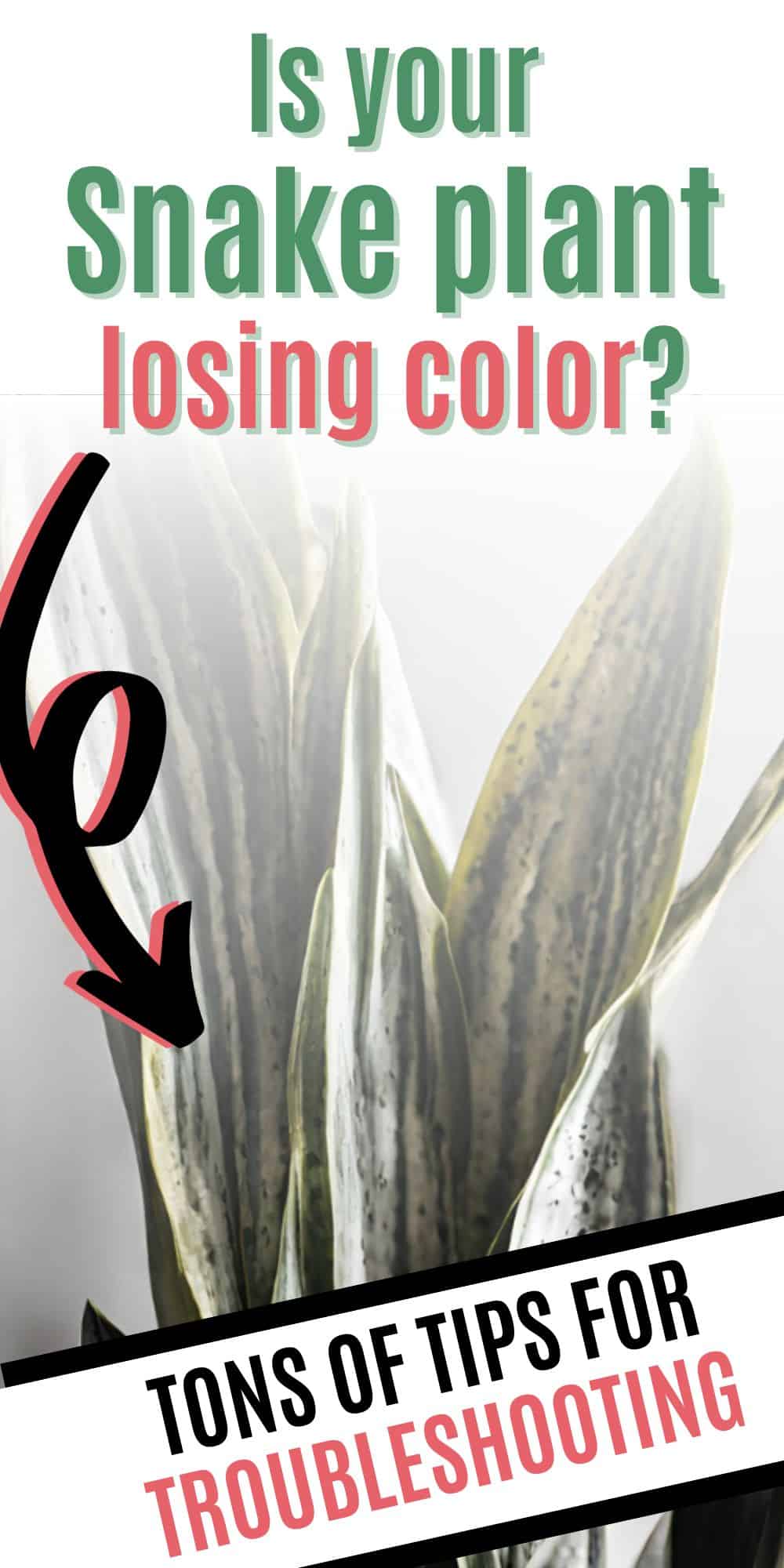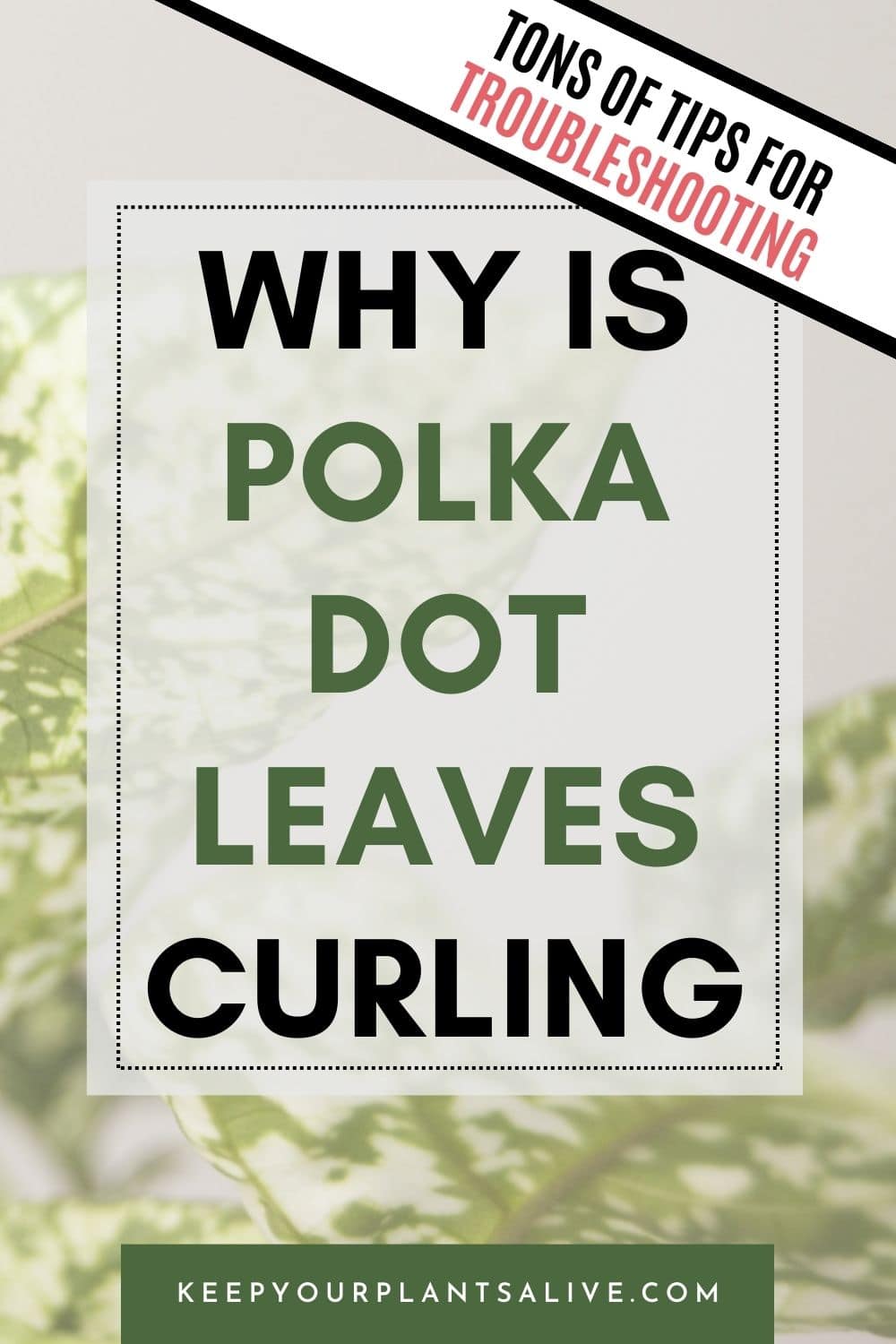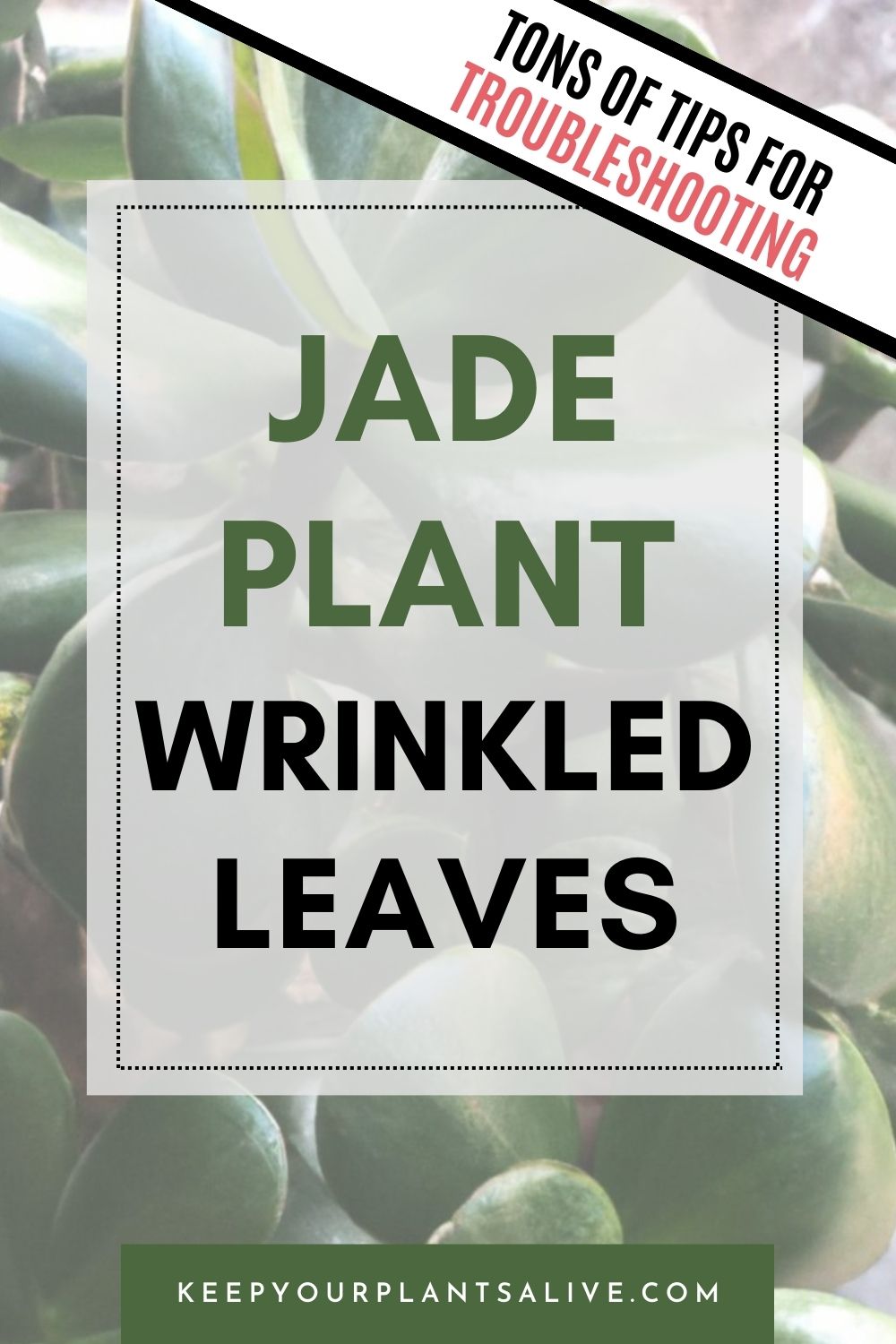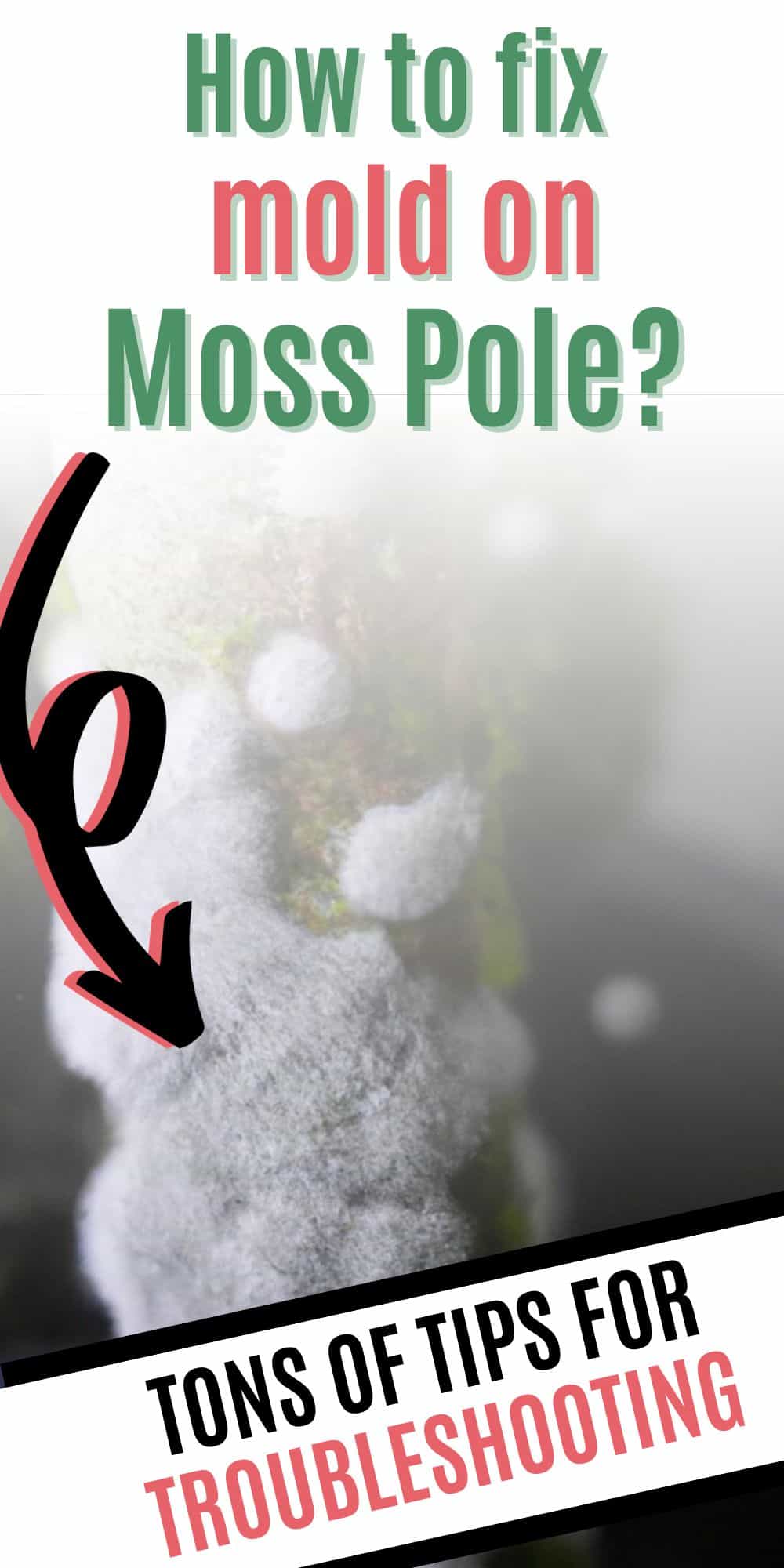Calatheas are beautiful house plants, though they aren't the easiest plant to keep happy. Let's talk about why does my calathea have brown spots and what to do about it!
I bought a peacock calathea plant on a whim at my favorite plant store. I didn't give it too much thought!
However, I soon learned that they are finicky little plants with very specific needs.
These plants will be quick to tell you that they are unhappy by getting brown spots. If you have brown spots on your calathea, take it as a warning sign that there is a problem and address it while you still can!
More about calathea plants:
- Peacock calathea care guide
- Calathea Network care guide
- Calathea roseopicta plant care guide
- Why are my calathea leaves sticky?
- Why are my calathea leaves curling?
- Why does my calathea plant have brown tips?
- Why is my calathea drooping?
- Why are my calathea leaves turning yellow?
Free printable Calathea care guide
Join the (free!) KeepYourPlantsAlive+ community to access this exclusive printable plant care guide! Once you sign up, you can right click & save the JPG care guide. Or keep scrolling for more!
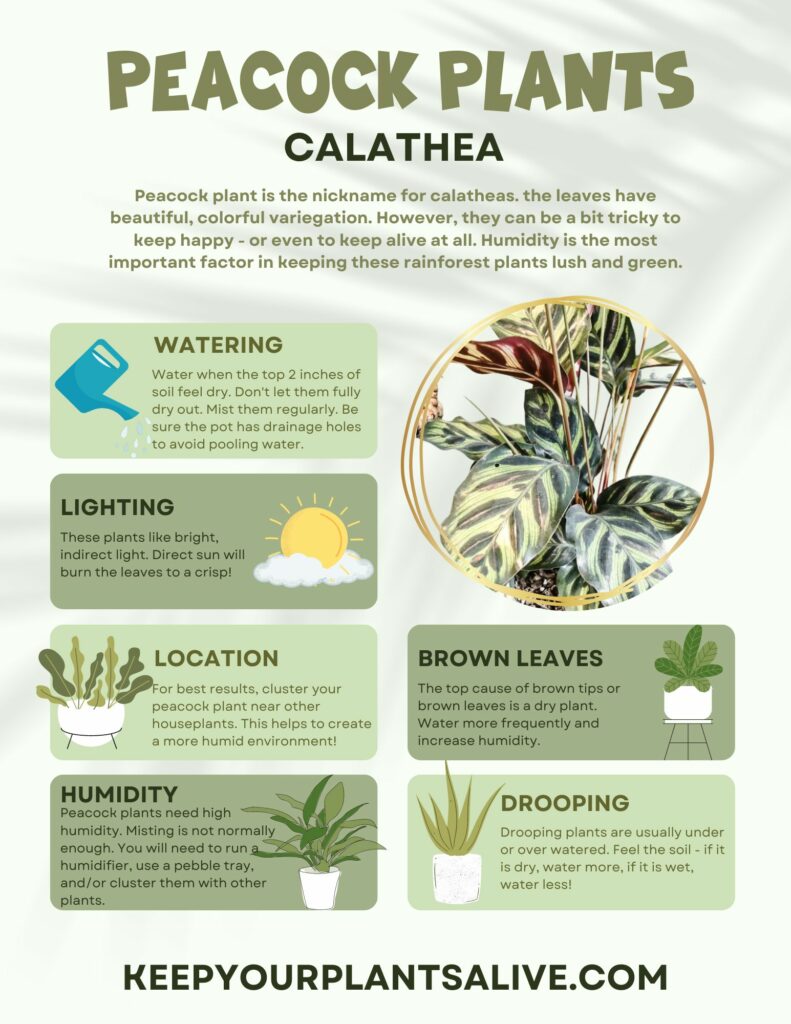
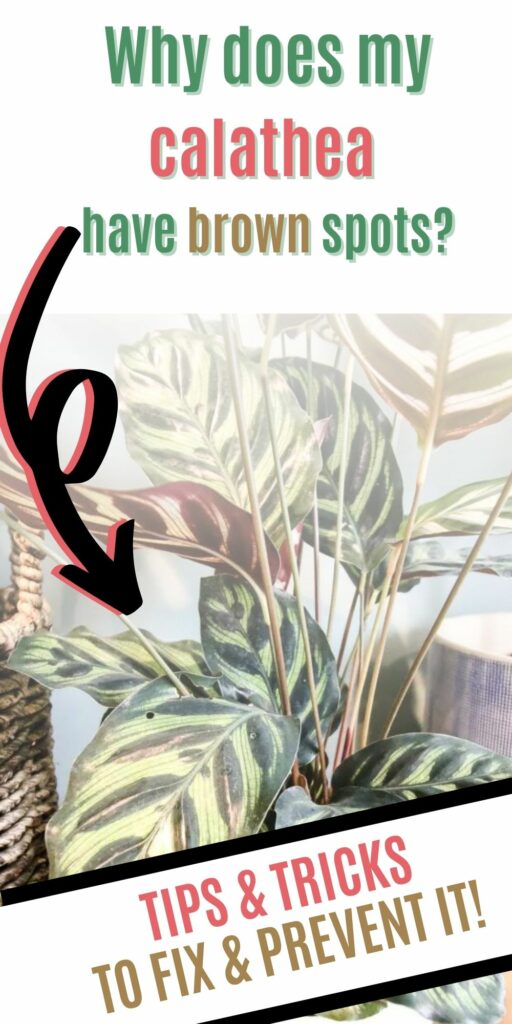
Why does my calathea have brown spots?
Brown spots on a calathea can be a sign of:
- Low humidity
- Poor water quality
- Improper watering
- Too much light
- Cold temperatures
- Pest infestation
- Over fertilization
Low humidity
Calathea plants like high humidity. This could mean misting them daily, using a pebble tray, running a humidifier, or grouping plants together to share humidity.
Poor water quality
Calathea plants are very particular about water. They are NOT tolerant of fluoride - which is in most tap water. They can only be watered with rainwater or distilled water.
These plants also do not like cold or hot water. It needs to be room temperature. I told you they are divas!
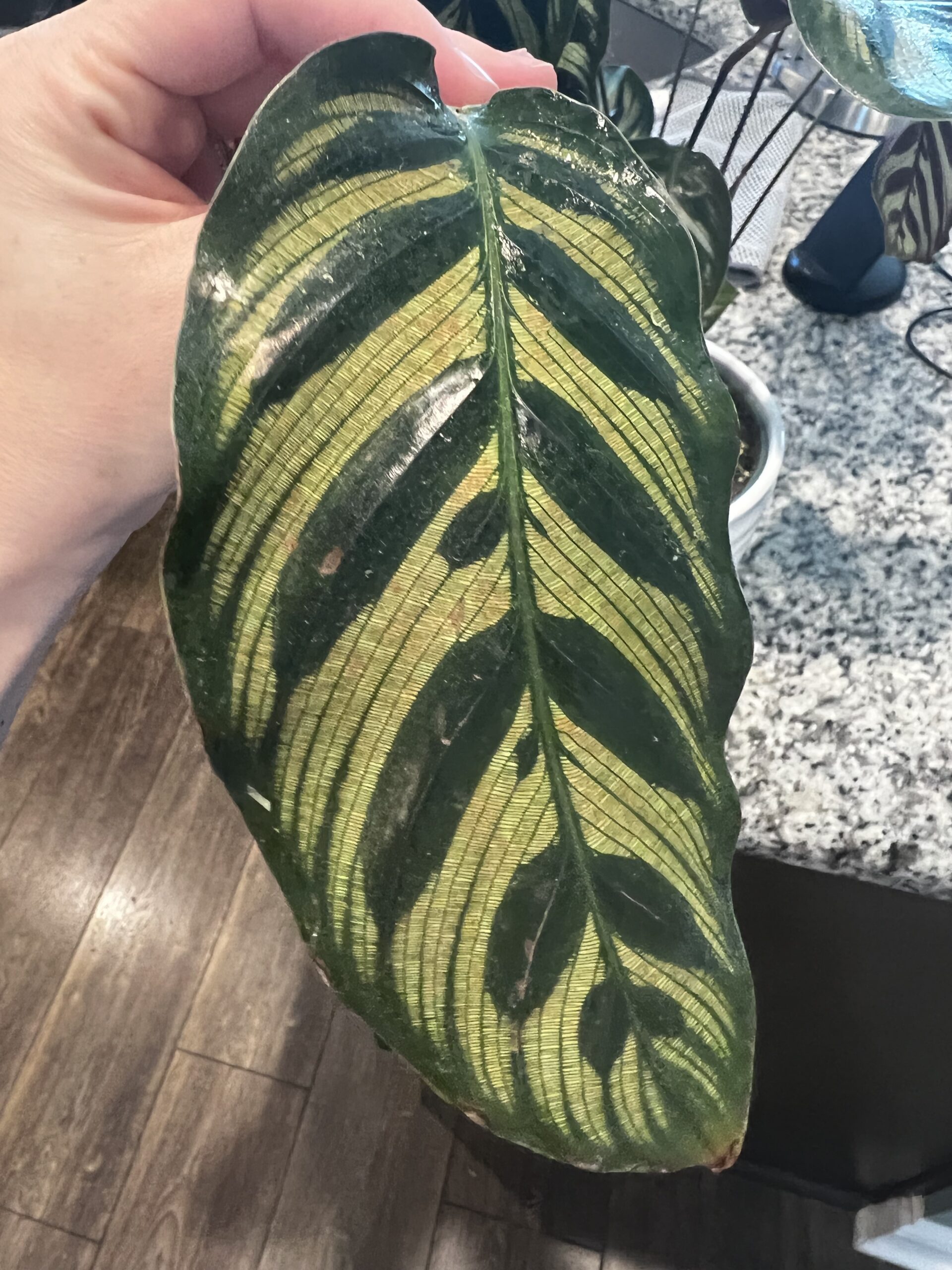
Improper watering
Calathea prefers to be kept moist. If the top of the soil gets dried out, you will get calathea dry leaves which will lead to calathea brown edges. Not good! Keep the soil consistently moist to avoid this.
Too much light
Too much direct light can sunburn the delicate calathea leaves. If your plant is outdoors, be sure it has some shade to prevent the leaves from getting scorched.
If you want to move a plant outside, move it out gradually into sunnier spots to avoid shocking it with sun.
Cold temperatures
Cold temperatures or frost can put your plant into shock. Don't leave it outdoors is temperatures will drop below 50 degrees. You can't revive frostbitten leaves, just cut them off and try to keep it warmer!
Be sure to keep your plant away from drafts like a door, window, or HVAC vent. Even small blows of cold air can lead to your calathea leaves dying one by one!
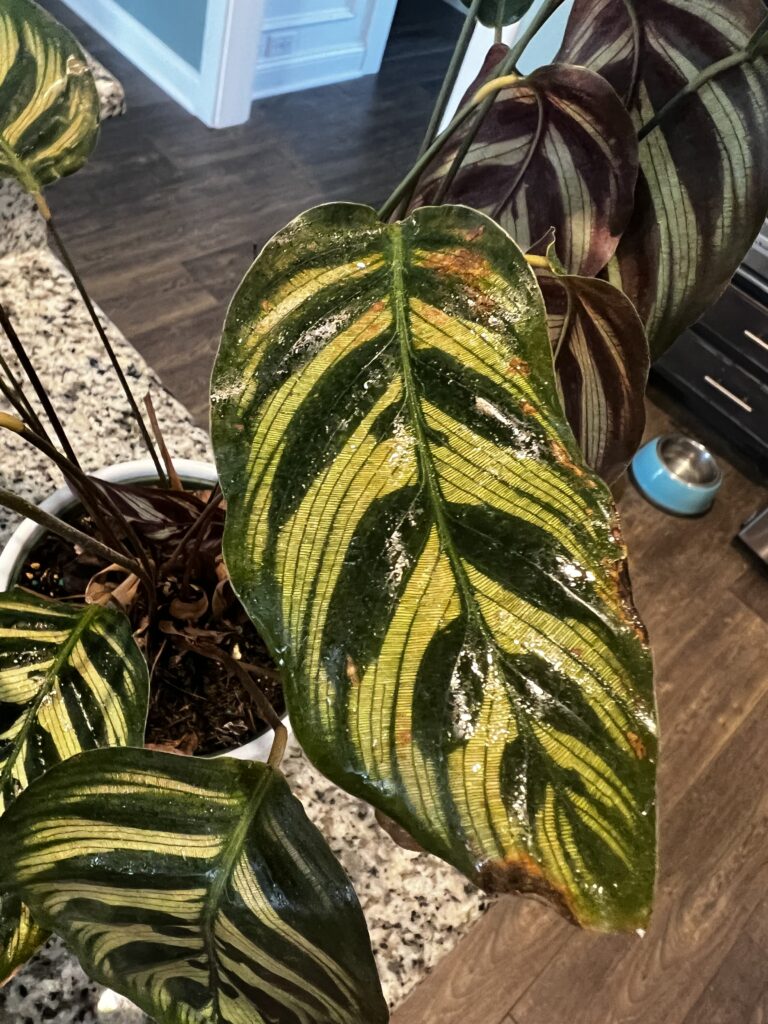
Pest infestation
Calatheas get spider mites very badly. They are just pest magnets! If your plants have sticky under their leaves, it is probably pests. Read my guide to sticky calathea leaves here!
Over fertilization
Fertilization can be great for a plant, but it can also burn them, too. If you just fertilized your calathea and then it got brown spots, that was probably the cause. Lean out on the fertilizer for a bit.
Frequently asked questions about calathea brown leaves
How often should I water Calathea?
Calathea likes moist soil. I find that they need watering twice as often as the average house plant! Be sure that your pot has drainage holes to avoid them sitting in pooling water.
Should I mist my calathea?
Yes, calathea needs a lot of humidity and likes to be misted regularly. Calathea misting is a must!
Why does my Calathea have brown tips?
The most common reasons for a calathea to get brown tips is a lack of humidity. Mist it regularly, and consider adding a humidifier or pebble tray to increase humidity further and prevent further calathea leaf edge browning!
Why is my Calathea getting spots?
Brown spots on calathea leaves are usually due to improper watering or poor quality water. You can't use tap water, or cold water, and you need to keep them moist.
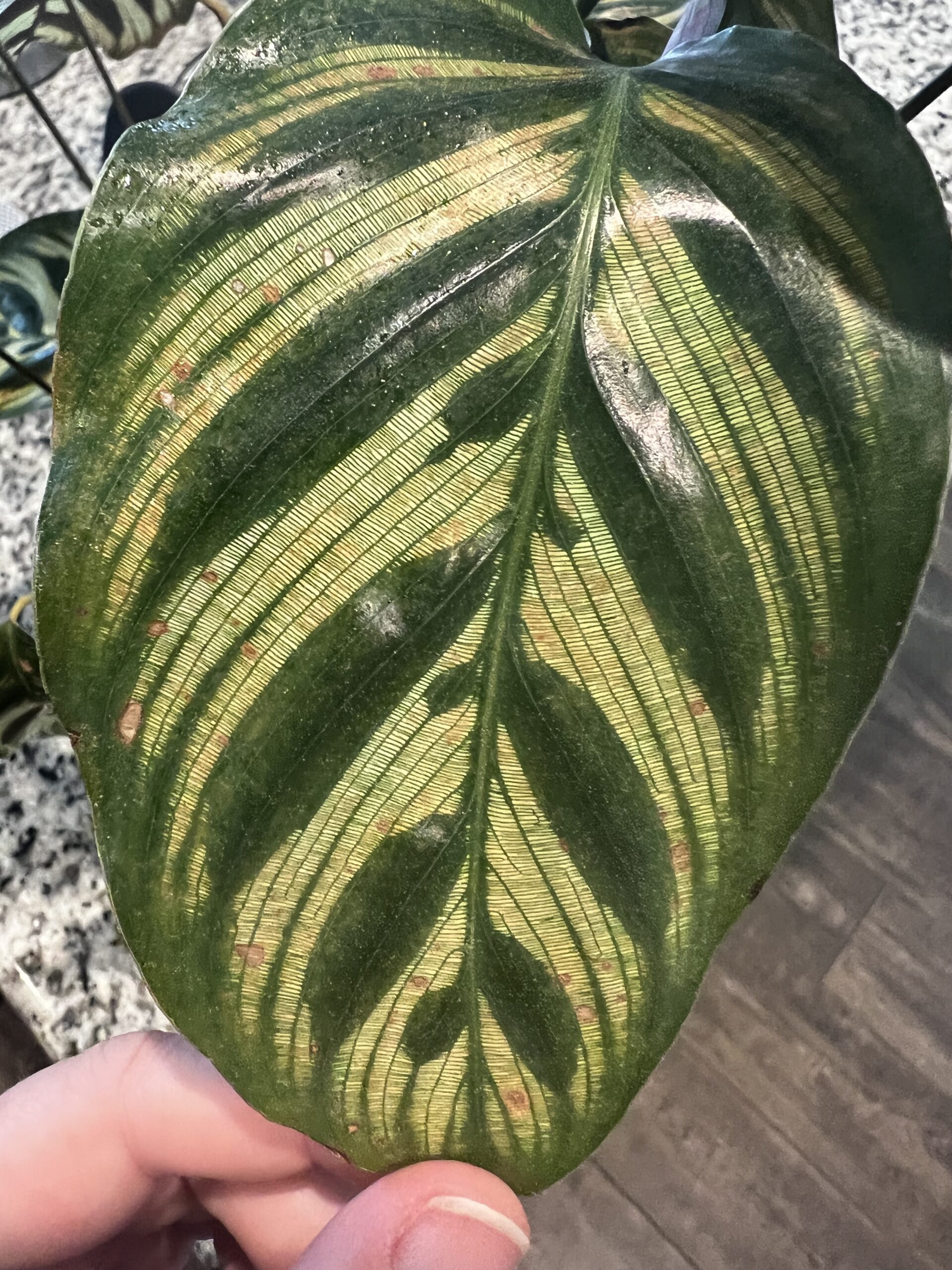
Should I cut off Brown Calathea leaves?
Brown leaves are not going to return to green and come back to life. You can choose to cut them off or let them fall off naturally. It's an aesthetic choice. Here's my guide to cutting dead plant leaves!
How do I treat brown spots on my peacock plant?
Take brown spots as a warning sign that your plant is unhappy and try to find the problem. It most likely has to do with watering. Adjust your plant care plan to help prevent more brown spots from appearing!
Brown spots aren't going to turn back green, so all you can do is focus on improving conditions going forward.
How do I know if my calathea is dying?
Dying calathea plants will have leaves turning yellow or brown and dropping off one by one. If this happens, try to figure out the problem ASAP. Usually it has to do with watering and humidity.
Fix your watering schedule and re-pot if you think it needs new soil or a pot with better drainage!
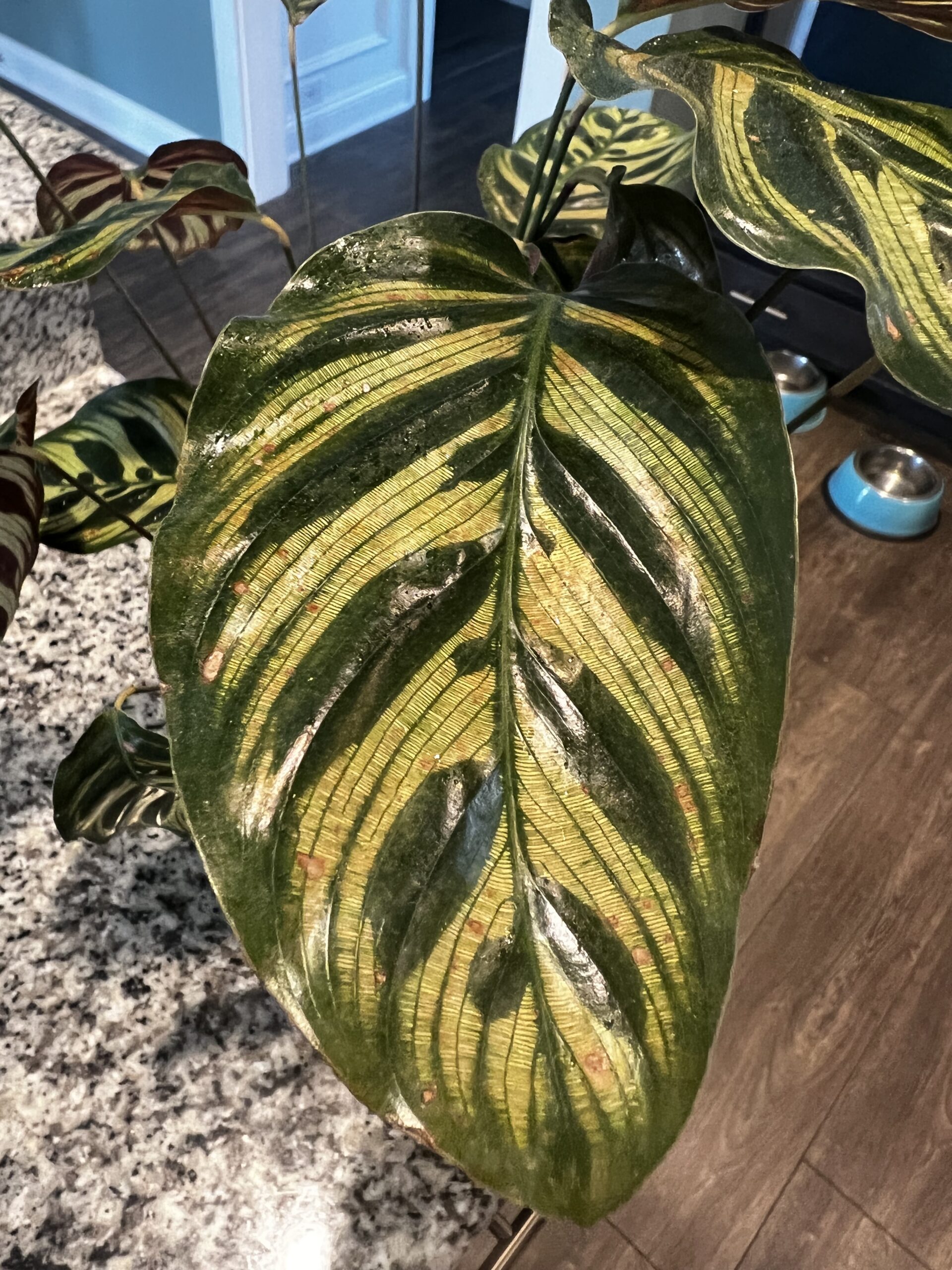
Why are the edges of my plant leaves turning brown?
Peacock plant brown edges usually indicate insufficient humidity. Add a humidifier or mist daily to help improve the conditions and avoid further browning of the leaves!
How often do Calatheas grow new leaves?
Happy and healthy calatheas will produce a few leaves a month during their growing season, spring and fall. If a plant is not growing new leaves in the summer, it might not be happy with its conditions.
Why do Calathea leaves curl?
Calathea leaves curling and browning are a sign that the plant is under watered. Increase the watering frequency and mist regularly!
Any more questions about calathea browning leaves?
Before you go...
Did you know that variegated plants have very specific care needs? If you have a variegated calathea, you don't want to miss our guide to caring for variegated plants!
Thanks for reading!


Hey there, I'm Morgan, a houseplant enthusiast from sunny Charleston, South Carolina. Growing up surrounded by my mom's lush orchids and African violets, I discovered the magic of bringing nature indoors. Thanks to the pandemic, I delved deeper into houseplants, discovering their power to uplift moods and transform spaces. I'm here to spill all my secrets, helping you pick the perfect houseplant - and make it happy. Let's keep your plants alive, together! 😊

